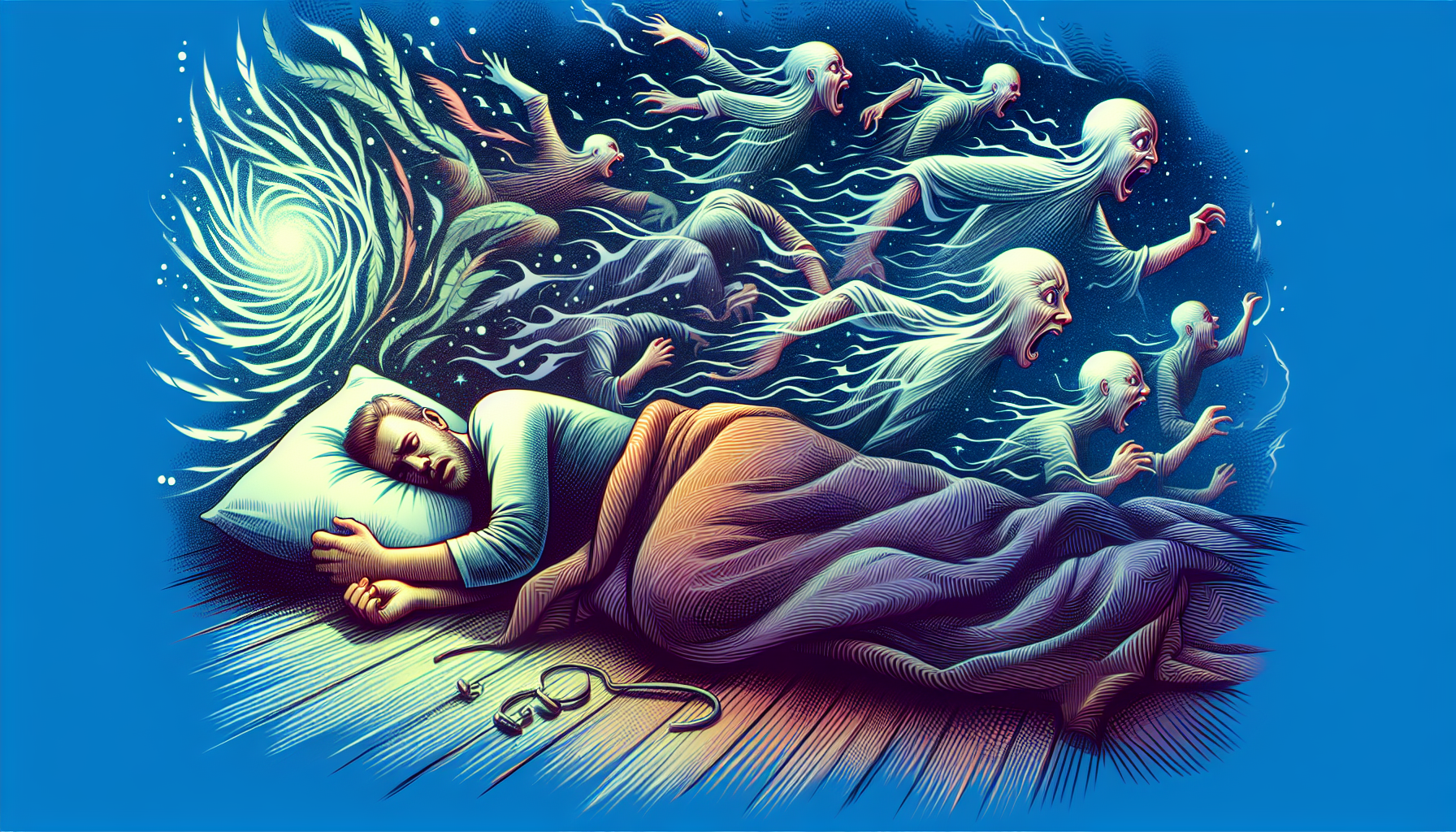Have you ever experienced vivid and intense dreams that make you physically act out during your sleep? If so, you may be suffering from REM sleep behavior disorder (RBD). This condition causes individuals to physically and sometimes violently act out their dreams while in the REM (rapid eye movement) stage of sleep. Understanding the causes and treatments for RBD is crucial for managing this disorder and ensuring a restful night’s sleep. So, let’s explore the fascinating world of REM sleep behavior disorder and discover how it can be effectively treated.

Causes of REM Sleep Behavior Disorder
REM Sleep Behavior Disorder (RBD) is a sleep disorder characterized by the loss of muscle atonia during REM sleep, resulting in the individual acting out vivid and often violent dreams. Understanding the causes of RBD is crucial in developing effective treatment strategies for this disorder. Several factors have been identified as potential causes of RBD, including neurodegenerative disorders, medication side effects, alcohol and illicit drug withdrawal, brainstem lesions, genetic factors, and other neurological conditions.
Neurodegenerative Disorders
One of the leading causes of RBD is neurodegenerative disorders, which are characterized by the progressive degeneration of the nervous system. Parkinson’s Disease, Multiple System Atrophy, Lewy Body Dementia, and Progressive Supranuclear Palsy are some of the neurodegenerative disorders commonly associated with RBD. In these disorders, the degeneration of specific regions of the brain leads to the disruption of normal sleep patterns, resulting in RBD symptoms.
Medication Side Effects
Certain medications can also trigger RBD as a side effect. Antidepressants, antipsychotics, and sleeping pills have been known to induce RBD in some individuals. It is important to discuss potential side effects with healthcare professionals before starting any new medication, especially if there is a history of RBD or other sleep disorders.
Alcohol and Illicit Drug Withdrawal
The withdrawal from alcohol and illicit drugs can also contribute to the development of RBD. When individuals who are dependent on these substances abruptly stop using them, it can cause disturbances in the sleep cycle, including the loss of muscle atonia during REM sleep. This can result in the manifestation of RBD symptoms.
Brainstem Lesions
Brainstem lesions, which are abnormalities or injury to the brainstem, can disrupt the normal functioning of sleep-wake mechanisms and contribute to the development of RBD. The brainstem is responsible for regulating muscle tone during sleep, and any damage to this region can lead to the loss of muscle atonia during REM sleep, causing RBD symptoms to occur.
Genetic Factors
There is evidence to suggest that genetic factors may play a role in the development of RBD. Some studies have shown an increased prevalence of RBD in families with a history of the disorder, indicating a genetic component. Further research is needed to fully understand the genetic factors involved in RBD and their specific mechanisms.
Other Neurological Conditions
In addition to neurodegenerative disorders, there are other neurological conditions that have been associated with RBD. Narcolepsy, a neurological disorder characterized by excessive daytime sleepiness, can also cause RBD symptoms to occur. Traumatic Brain Injury and Stroke have also been linked to the development of RBD in some cases.
Treatments for REM Sleep Behavior Disorder
While there is currently no cure for RBD, several treatment options are available to manage the symptoms and improve the quality of life for individuals with this disorder. The choice of treatment depends on the underlying cause of RBD and may involve a combination of medications, lifestyle modifications, and safety measures.
Medications
Medication therapy is commonly used to control the symptoms of RBD. Clonazepam, a benzodiazepine, is widely regarded as the most effective medication for RBD. It helps to suppress the motor activity during REM sleep and reduces the occurrence of disruptive behaviors. Melatonin, a hormone that regulates sleep-wake cycles, can also be prescribed to help regulate sleep patterns and improve symptoms of RBD. Antidepressants and other benzodiazepines may be used in certain cases.
Lifestyle Modifications
Certain lifestyle modifications can help in managing RBD symptoms. Establishing a regular sleep schedule, creating a relaxing sleep environment, and practicing good sleep hygiene can promote better sleep quality. Avoiding caffeine, nicotine, and alcohol before bed can also reduce the likelihood of RBD episodes occurring.
Safety Measures
To ensure the safety of individuals with RBD and those around them, safety measures should be implemented. Padding the bed with soft materials can help prevent injuries during RBD episodes. Removing hazardous objects from the bedroom is crucial to avoid accidents. Additionally, bed alarms can be used to alert caregivers or loved ones if an RBD episode occurs, enabling prompt assistance.
In conclusion, understanding the causes of RBD is essential in developing appropriate treatment approaches. Neurodegenerative disorders, medication side effects, alcohol and illicit drug withdrawal, brainstem lesions, genetic factors, and other neurological conditions can all contribute to the development of RBD. Treatment options include medication therapy, lifestyle modifications, and safety measures to manage RBD symptoms effectively and improve the overall well-being of individuals with this disorder. With the right interventions, individuals living with RBD can experience improved sleep quality and a reduced impact of RBD on their daily lives.

